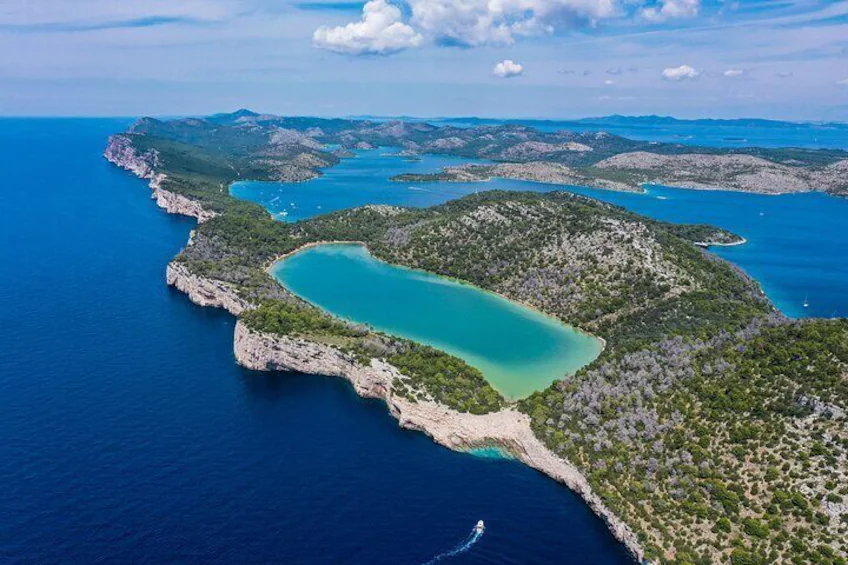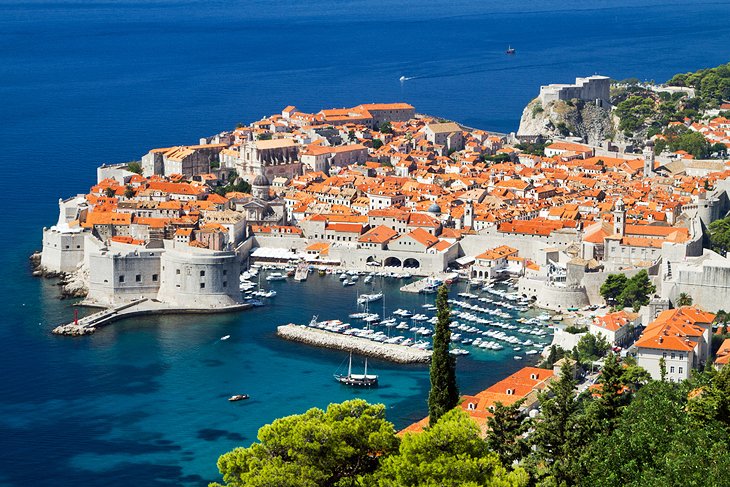Hvar Town

On the same-named island in Croatia's Split-Dalmatia County sits the town and port of Hvar. The town is the largest settlement on the island of Hvar, with 3,771 residents, while the municipality has 4,251 (2011) residents. It is located across from the neighboring towns of Stari Grad and Jelsa on a harbor on the island's south shore.The town of Hvar has a long and illustrious history as an Adriatic cultural and commercial hub. With a powerful stronghold above that surrounded the town walls and guarded the port, this commune, which was a part of the Venetian Empire from the 13th to the 18th century, was a significant naval base.[4] As wealth increased, so did cultural life, and one of Europe's oldest theaters still standing, which inaugurated in 1612, is located in Hvar.The walls, which date back seven hundred years, as well as numerous public structures and noble homes from the fifteenth to seventeenth centuries, are still standing.The Hygienic Society of Hvar (Higijeničko društvo u Hvaru), which celebrated its 150th anniversary in 2018, changed the course of the town's and the island's economy once the port of Hvar was no longer used as a military post in the 19th century. It was established in 1868 with the goal of offering "good care for visitors" and was one of the first "tourist boards" in Europe. The Arsenal, Loggia, the Croatian Institute, and the Hvar Heritage Museum with its art and archeological collections are only a few of the town's many hotels, galleries, museums, and exhibitions today.Located in a charming natural bay and shielded to the south by the Pakleni Otoci island series, the port of Hvar provides a year-round safe refuge for boats. Particularly during the summer, the village is a popular port of call for yachts traveling the Adriatic. The port of Hvar has frequent catamaran ferry services to Split, Brač, Korčula, Lastovo, and Vis.
May through September are the best months to visit Hvar because of the pleasant weather and little precipitation that make these months ideal for exploration and outdoor activities. Hvar has a Mediterranean climate with warm, dry summers throughout the busiest travel months.
Hvar is most known for its world-class food, stunning architecture, and crazy partying. The island's nightlife has made it quite popular. It is also well-known for its cuisine and beaches. In addition, a lot of tourists visit for the museums and other attractions, hiking, shopping, scuba diving, and snorkeling. The cultural tradition of Hvar is rich. Hvar was a significant hub for early Croatian literature, architecture, sculpture, painting, and music in addition to autonomous Dubrovnik. During the 16th and 17th centuries, prominent Croatian cultural luminaries such Hanibal Lucić, Petar Hektorović, Vinko Pribojević, Mikša Pelegrinović, Martin Benetović, and Marin Gazarović resided and worked on Hvar.Church pageants, like the 15th-century Pageant of St. Lovrinac (Laurence) the Martyr, are the first performances known to exist. The first Croatian drama, Robinja (The Slave Girl), was written by Hanibal Lučić at the beginning of the 16th century.Benetović's comedies came next, followed by Marin Gazarović's secular and religious pageants, among other pieces. Constructed in 1612, Hvar's Theatre is among the oldest in Europe. Throughout the 19th century, a vibrant theatrical culture persisted, particularly around carnival season, when masquerades (also known as cavalchins) were planned and musical and theatrical productions were put on. Over the years, numerous musicians and actors from across the country have performed here and still do
.In addition to tourists that flock to Hvar to enjoy its beaches and water activities, yachters and celebrities also frequent the island. From Split, it may be reached via ferry.There are many catamarans from Split and Dubrovnik on the mainland that go to Hvar Town, which is easily accessible from the mainland. Additionally, there are services to Hvar Town from the islands of Brac, Korcula, Mljet, and Vis. Having said that, Split is the most convenient way to get to Hvar Town.Hvar is a popular destination for tourists who want to enjoy its beaches and water sports, as well as yachters and celebrities. From Split, a ferry serves it.From Split and Dubrovnik on the mainland, there are many catamarans that go to Hvar Town, which is fairly accessible from the mainland. Services to Hvar Town are also available from the islands of Brac, Korcula, Mljet, and Vis. The easiest way to go to Hvar Town from Split is as stated above.Hotels near Heritage Hotel Dea Hvar.Beach Bay Hvar Hotel,Amfora Hvar Grand Beach,Hotel Podstine
With hot, dry summers and warm, rainy winters, Hvar town has a sunny Mediterranean climate that is typical of the southern Adriatic. The average temperature is over 20 °C (68 °F) from June to September, and it only falls below 10 °C (50 °F) in January and February. The temperature ranges from 4 to 10 °C (39 to 50 °F) on winter days, with highs between 10 and 18 °C (50 and 64 °F). Summertime highs vary from 27 to 34 °C (81 to 93 °F), while nocturnal lows fall between 18 and 25 °C (64 to 77 °F).
By Admin
19 May 2025

.jpeg)
.jpeg)


